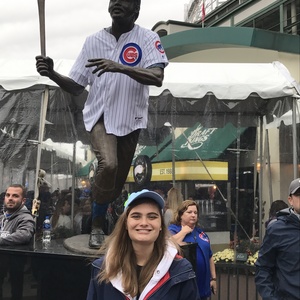As I have shared in my previous articles, I went through a lot of testing over the summer and it pretty much led to a dead end. Well, not completely, as my doctor put me on a FODMAP diet. Given that I’m not allergic to anything, just sensitive in my stomach to a lot of things, she suggested I figure out which things bother me most.

She gave me a list of foods that can cause a lot of problems. They call these foods FODMAPs, which stands for Fermentable Oligo- Di- and Mono-saccaharides And Polyols, which are mainly carbohydrates with certain types of sugars and fibers that are hard for some people to digest.
Where can I find these types of ingredients? You’ll be surprised on how common they are.
Sugars

Lactose and fructose are types of sugars that are sometimes hard to digest. Lactose is a dairy sugar in milk, cream, ice cream, butter, etc. In today’s world, it is becoming more common for people to find out they are lactose intolerant.
Fructose is a sugar in many fruits, in honey, and high-fructose corn syrup. This includes some of your favorites like apples and watermelon. I know, it sucks
Polyols

These are sugar alcohols, like sweeteners with sorbitol and mannitol, xylitol, and fruits with pits, like avocado, peaches, plums.
So, those ‘fake sugars’ always sound like a great alternative, but they really aren’t always better. When in doubt, go with natural sugars.
Fiber

Fructans and galactans are in wheat (including all purpose flour), beans, lentils, legumes, soy, some vegetables, and some nuts, like cashews and pistachios. Also, onions and garlic are fructans.
This is a big area, and really hard for many to avoid. Lots of people know beans can cause problems, but flour and veggies too? I always thought we were supposed to get more fiber.
So, what happens when you have to test a FODMAP diet?
These foods can cause you to become increasingly bloated. What I have learned, is that the best way to go about testing was to slowly avoid certain types and groups, to see which ones were problems for my body. Then, once I realized what was and what wasn’t working, I adding back the ones that didn’t upset me and started finding alternative meals to avoid the ones that were.
On another note, many of these foods have lectins as well, which can also irritate the stomach. I know, another thing you have to watch out for.
Since sometimes foods are picked before they are ready, and/or they have seeds which they are trying to protect, they produce a chemical that is supposed to keep people from eating them. So, when you eat the fruits and veggies they make you bloated and fatigued. Many lectins can be eaten, though, if the foods have been cooked
The most important question, What can I have

So, luckily, there are still plenty of good foods and drinks to have. There are a variety of fruits and vegetables, like bananas, grapes, cantaloupe, raspberries, carrots, lettuce, broccoli, and pumpkin. Most meats, without breading, and seafoods are up for grabs as well.
Some favorites include corn chips, popcorn, rice, sourdough bread and dark chocolate! Feel free to drink coffee, tea, coconut water and milk, wine, and clear spirits.
#SpoonTip: Interested in learning more about FODMAPS? Check out this link for some helpful


